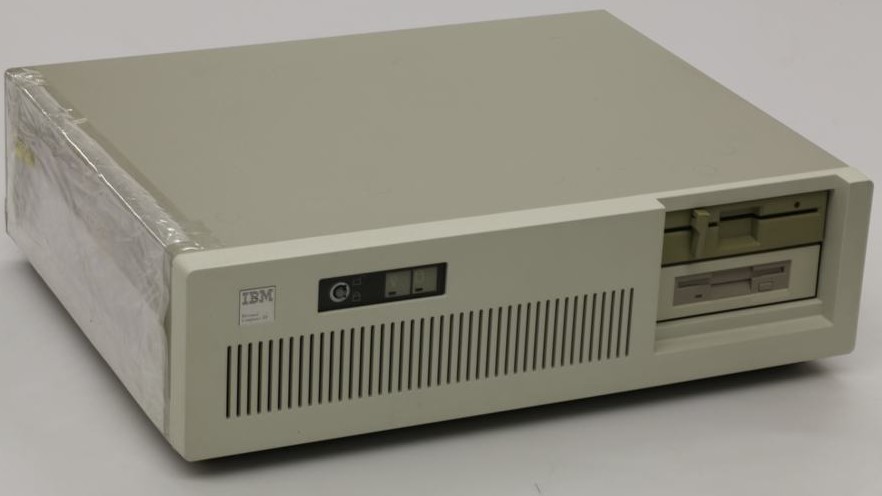Preamble
The Australian Computer Society (ACS) was formed 50 years ago, when the various state computer societies joined forces.
To mark the occasion, the ACS has produced a heritage project to honour the many individuals who have contributed to the growth of the ICT profession in Australia.
At the heart of the project is a history of computing in Australia. It is not just a history of the ACS, but the history of a profession.
Australia has the longest computing history of any country, excepting the US and the UK, and CSIRAC in the Museum of Victoria is the oldest computer still in existence.
Chapter 41: Offsets and local manufacturing
Over the years there have been many initiatives from government and private industry to build an Australia hardware industry. But despite some brave attempts it never really happened.
The Australian Government moved into computers strongly in the 1960s (see Chapter 18). There was much discussion in the early days about the extent to which government should help foster an Australian computer industry.
Many computer pioneers like Trevor Pearcey believed that Australia missed an opportunity to become a significant computer supplier. Others believe that Australia never had a chance, largely because of its geographical isolation and the relatively small size of the local market.
Today the argument is now largely academic. Virtually all hardware manufacturing in the computer industry takes place in Asia. But Australia had a go. Hardware was never likely to succeed, but our software and services industries are large and important, and major sources of income.
The Offsets Program
In 1968, at the height of the Vietnam War, an Australian Government mission visited the USA to examine ways in which Australian industry could be more involved in the US defence program. That led to the establishment of the Australian Industry Participation Program (AIPP), an ‘offsets’ scheme under which Australian purchases of US defence material would be reciprocated, or offset, by US purchases of Australian material.
Although the program was initially intended to be used for defence purposes, it was soon expanded into other areas, particularly aviation and computers. But there was some confusion about how it was to work.
The rules were not clear and the AIPP was not well-managed. The program did not specify the offsets were mandatory, nor did it set a level the amount of material to be offset. Contractors were expected to ‘do their best’.
Two major projects that benefited from the offsets program were the Aussat satellite (later to be privatised and to form the foundation of Optus) and the trans-Pacific ANZCAN communication cable.
At this time, the Australian Government was spending around $40 million a year on computers, almost all of which were imported. Many major projects, such as the Department of Social Security’s giant Stratplan reequipment program, involved substantial local manufacturing.
In the case of Stratplan, major contractor Wang (see Chapter 39) set up a terminal manufacturing facility in Canberra to build thousands of terminals and the new network.
Other technological benefits to flow from the program included software and the manufacture of computer components, multi-layer circuit boards, re-flow soldering, metal glare resistor production, and micro welding of integrated circuit flat packs.
The offsets program encouraged many international computer suppliers to undertake software development in Australia that may otherwise have occurred overseas. This included software development undertaken locally by multinational suppliers and contracting out software development to local software houses.
Three examples of development programs undertaken by multinational s during this period include initiatives by IBM, Hewlett-Packard, and Fujitsu. Many other vendors had smaller operations.
IBM
In 1976, IBM began assembling its Selectric electric typewriters in a plant in Wangaratta, Victoria. The first production line employed 13 people had a capacity of 30 electronic typewriters a day. There were eventually four production lines. In 1979, a new plant was constructed, and by 1981, 100,000 electric typewriters had been assembled there.
In 1984, IBM began assembling PCs in Wangaratta. It was only one of three IBM PC production facilities in the world. The plant expanded to produce PC planar boards, Japanese character Kanji display cards, and entire PC motherboards. The 1990s IBM’s RS/6000 RISC workstations were also assembled in Wangaratta.
But IBM was unable to justify continued local manufacture in a high cost economy, and sold the Wangaratta plant to Australian company Bluegum in 1998. Bluegum was initially successful but it was acquired by US company Selectron in 2000, which closed the Australian manufacturing operation shortly afterwards.
IBM, like many other computer companies at that time, moved increasingly into services. IBM Australia was to become a major exporter of software and services to the Asia-Pacific and beyond.
Hewlett-Packard
After Hewlett-Packard set up in Australia (see Chapter 37) it quickly realised that its chances of winning government business would be greatly enhanced by local R&D and manufacturing.
In the 1970s, it began assembling oscillators for local sales and for export, and in 1984 HP Australia established its Australian Software Operation (ASO), based in the Melbourne suburb of Ringwood. It was shut down in 1990 after HP rationalised its global software development centres.
HP's most significant Australian manufacturing initiative was its Australian Telecom Operation (ATO), which was established in 1989 after the company won a number of large orders from Telecom, the government owned telecommunications monopoly, and precursor to Telstra.
This led to all of HP’s global design and manufacturing of its high-end telecommunications test equipment taking place in Melbourne. By the end of the 1990s, this business was exporting more than $100 million worth of equipment annually.
Fujitsu
In 1989, Fujitsu (see Chapter 28) established Fujitsu Australia Software Technology (FAST), a major software development facility, and the first for Fujitsu outside of Japan. FAST was established in response to the arbitration settlement with IBM under which both companies were granted access to each other’s mainframe system software.
Many of FAST’s early projects were to develop software designed to bridge the gap between IBM and Fujitsu software. The first project undertaken at FAST was called CICS/AIM/BRIDGE, which enabled third party applications which ran on IBM’s CICS mainframe transaction processing system to be run on Fujitsu mainframes under the AIM/DB database.
FAST was established in the Sydney suburb of Frenchs Forest, and a smaller facility in the Brisbane suburb of Taringa, near the University of Queensland. FAST was a major investment for Fujitsu, with initial capital of $10 million and tens of millions more in subsequent years.
The first computer to be installed at FAST was a Fujitsu M-780, at that time Fujitsu’s largest commercial mainframe. It was staffed almost totally by Australia software developers, and had a staff of 45 soon after its establishment.
Veteran ICT journalist Graeme Philipson has written ‘A Vision Splendid: The History of Computing in Australia’.
It is available as a PDF download here.
Previously published:
Chapter 40: The rise of the superminis
Chapter 38: Prime and the Lionel Singer story
Chapter 37: HP and IBM rule the 80s
Chapter 36: Data General and Sigma Data
Chapter 35: DEC leads the minicomputer boom
Chapter 34: David Hartley, Bill Gates and the one that got away
Chapter 33: Australia’s software entrepreneurs
Chapter 32: Multinational software companies move in
Chapter 31: Birth of Australian software and services industry
Chapter 30: The rise and decline of the PCMs
Chapter 29: ‘Plug compatible manufacturers’ take on IBM
Chapter 28: The rise of Fujitsu
Chapter 26: The rest of the BUNCH
Chapter 25: Honeywell in Australia
Chapter 23: ACS at home and abroad
Chapter 22: The early years of the Australian Computer Society
Chapter 21: Other Australian universities
Chapter 20: University of Melbourne and Monash
Chapter 19: Sydney University and UNSW lead the way
Chapter 18: Computing in the Australian Government
Chapter 17: Trevor Pearcey and the birth of CSIRONET
Chapter 16: Enter the minicomputer – DEC comes to Australia
Chapter 15: The IBM S/360 in Australia
Chapter 14: IBM redefines the computer industry
Chapter 13: Control Data Australia (part II)
Chapter 12: Control Data Australia (part I)
Chapter 11: The Australian Computer Society
Chapter 10: Five Computer Societies
Chapter 9: Australian made, Australian designed
Chapter 8: Australia's Computer Industry in 1962
Chapter 5: SILLIAC and the Snowy Mountains Scheme
Chapter 3: Harry Messel and the birth of SILLIAC










